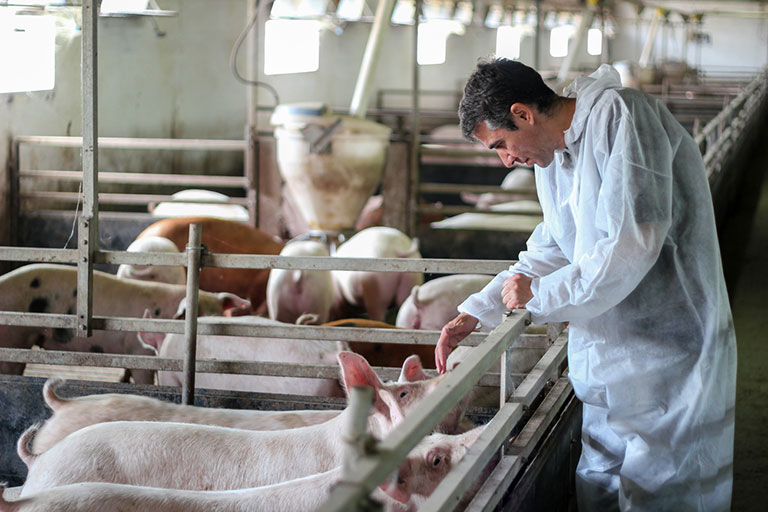
25 Sep Pig stockmanship and profitability go hand-in-hand
Giannis Karvelis, Nuevo S.A, g.karvelis@nuevo-group.com
Published on August 4, 2014 – www.WATTAgNet.com
As competition in the global swine business has increased dramatically over the past few years, any decision taken randomly will not deliver the same value.
There are many factors that affect the economic viability of a pig production business, and now days — more than ever — the need for rational decisions is essential for the sustainability of a pig unit. Pig producers today are required to make the right decisions in order to cope with the high feed costs, the new challenges from a veterinary point of view, the “lack” of qualified personnel, the strict legislation concerning the environment, the large social push regarding the welfare issues and, at the same time, to supply their increasingly demanding customers and markets with the desirable final product.
Ensuring that staff is highly trained, always motivated
Being perfectly honest, I strongly believe that while the size of a unit is getting bigger, the impact of the manpower in the production performance, and hence in the final financial outcome, is greater. I understand that the above may sound strange, especially if someone considers the modern technology machinery available today, but there are minor details directly correlated with the staff’s ability to successfully resolve issues that occur during the daily routine, which can really make a big difference in the final result.
From this perspective, the pig unit owner or/and the farm manager are obligated, on a regular basis, to train and educate the personnel on new technologies regarding pig stockmanship, feed usage/utilization, health monitoring and environment management. The objective of training should always be to provide to pig stockpersons with better understanding of their job, to successfully achieve a better working relationship with the farm manager, to emphasize team bonding and, finally, to increase the efficiency of production. All the mentioned will ensure that the enormous progress made (mainly, but not only) in genetics in recent years will be secured to the maximum possible extent.
In addition to the above, it should definitely be part of a leader’s personality to inspire and direct their employees to the common objective, which is none other than increase both the staff’s and animals’ performances. Taking into account the nature of the work, the employee in a pig unit needs to actively participate in the job and be recognized for contribution in each successful result. This is very important, as in combination with trust and confidence from the owner’s or manager’s side it will promote the employees’ motivation and self-esteem. The ultimate goal should be a highly-skilled, motivated and confident team of pig people that will help in solving any problems quickly and successfully.
Monitoring the health status
Disease control and prevention is a key requirement for farms today, if we consider the number of diseases that threaten the pig units, the economic damage they can cause and, last but not least, the cost of medical treatments. The establishment of a health status, free of the main infectious pathogens, is the first step to efficient production and thus to profitability.
To protect their interests, pig producers must implement a suitable biosecurity program, which will minimize the risk of transmission of pathogens from other units, or the slaughter house, and reduce the total load of pathogens that negatively affect the performance of their animals.
The most important factor for this to be attained is the location of the farm, which ideally should be in a very low pig density, far away from abattoirs and/or other pig farms, as the easiest way that most diseases are spread is through contact. Unfortunately, the majority of the pig farms are already on-site and therefore the possibility of choosing the appropriate location before hand is not a possibility. The second step, then, should be with the help of the technical consultant of the farm to identify the current health status and analyze the possible risks (depending on the location, the bio-security measures applied or not, and so on) in order to apply the appropriate vaccination program and medication treatments.
The third step should be to carefully select the source of the breeding stock. Here, before concluding to the desirable source of genetics, a very detailed study on the disease history, the bio-security breeding pyramid, the health program applied and the records of production parameters of the herd that will supply the incoming animals is a must to be studied and considered.
Finally, the fourth step is to understand that people — over the years — were by far the easiest way to transmit diseases. Indeed, for all visitors, a period of being “pig free” of one day/night must be a requirement (for SPF farms this should be prolonged), and a shower-in, complete change of clothes (provided by the farmer) is a minimum procedure necessary before entering the farm. This is a process that will significantly restrict the probability of any kind of transmission.




